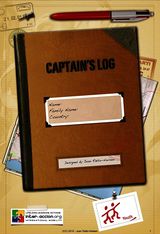Identification and Recognition of Learning Outcome
Contents
Learning Outcome: Definition
Learning outcome has obviously another nature than in a lot of formal educational institutions and programs. We use an understanding that is broad enough, following a study of CEDEFOP: “Learning outcomes are statements of what a learner knows, understands and is able to do after completion of learning.”[1]
Identification and Validation
EU distincts between the terms of identification and validation. [2]
|
Identification |
|
|
Validation |
|
Your Perspective on Identification and Validation
As well in non-formal education we are able to describe competency levels and the specific mixture of competences required for concrete tasks. In example we could imagine to design an ideal job profile, the profile for a specific facilitator position or we could validate and recognize specific skills of a facilitator or a trainee. As well training programs start to define their intended impact by focusing on their participants' capacities for applying the outcome, instead to a knowledge focused learning definition.
Key Competences for Lifelong Learning
One approach promoted by European Union is following the concept of their EU Key Competences for Lifelong Learning. The eight key competences are the framework and in addition there are some tools for validation and recognition:
EU Validation and Recognition Tools |
||
|
YouthPASS
|
Portfolio for youth leaders
|
European Skills Passport
|
European Qualification Framework
On a systemic level there is as well another important European framework. The European Qualification Framework (EQR) and the subordinated EU member state's national qualification frameworks seek to gain more compatibility between the different national education systems. The main challenge is here to describe vocational profiles and educational outcome for a broad range of educational fields. Therefore the competency model is elaborated enough to offer a profound description of the concrete validations as a basis for certification and documentation of the gain of knowledge and skills. [3]
Methodologically member states agreed on the EQF in 2008, which is concretized through every member state with a national qualification framework. [4] On 8 levels a definition for the needed knowledge, skills and competencies was defined, from level one – “basic knowledge” – up to level 8 –“knowledge at the most advanced frontier of a field of work or study and at the interface between fields”. The framework provides therefore "benchmarks for qualification levels across Europe and encourage the embedding of validation systems with formal qualifications system"[1] Member states develop their national qualification frameworks like in Germany through a Working Group on national level and a coordination group of Länder and federal government.[5]
References
- ↑ 1.0 1.1 European Centre for the Development of Vocational Training, 2009: [www.cedefop.europa.eu/EN/Files/3054_en.pdf The shift to learning outcomes Policies and practices in Europe]; p. 30 Cite error: Invalid
<ref>tag; name "cedefop" defined multiple times with different content - ↑ European Centre for the Development of Vocational Training, 2009: [www.cedefop.europa.eu/EN/Files/3054_en.pdf The shift to learning outcomes Policies and practices in Europe]; p. 15
- ↑ European Commission: Learning Opportunities and Qualifications in Europe
- ↑ http://ec.europa.eu/ploteus/content/descriptors-page
- ↑ Deutscher Qualifizierungsrahmen: http://www.dqr.de/
Example: Civic Engagement Workshop
The education programme from Poland, Ukraine and Belarus worked with a portfolio based on EU youthpass. Participants registered a platform [1] and safed all their learning achievements related to specific competences described in EU and OECD documents in a tailor made portfolio. At the end of the programme, the YouthPasses were attached to the certificates.
Example: Captain's Log
An example for a structured competency-related portfolio tool which might be used in your training or training programme. More...
Related








